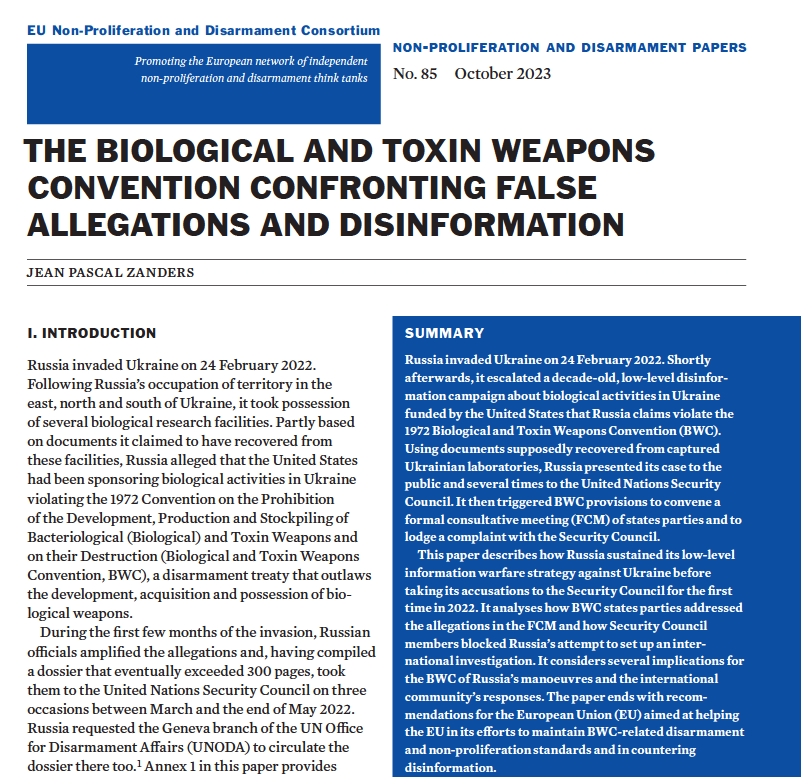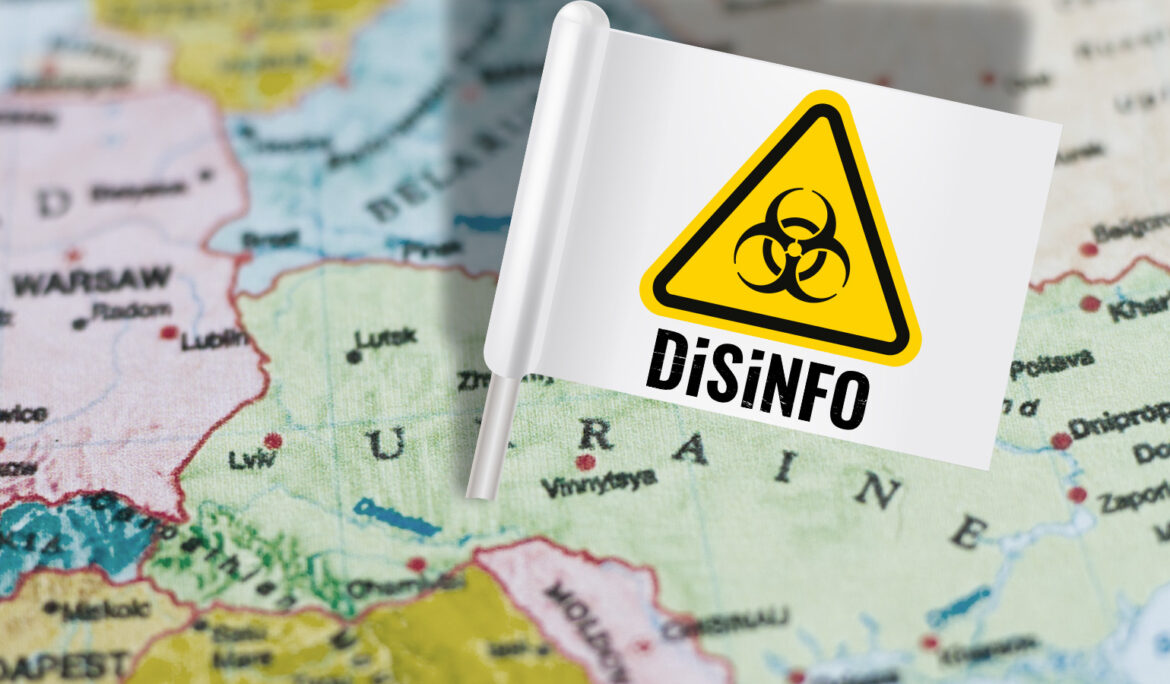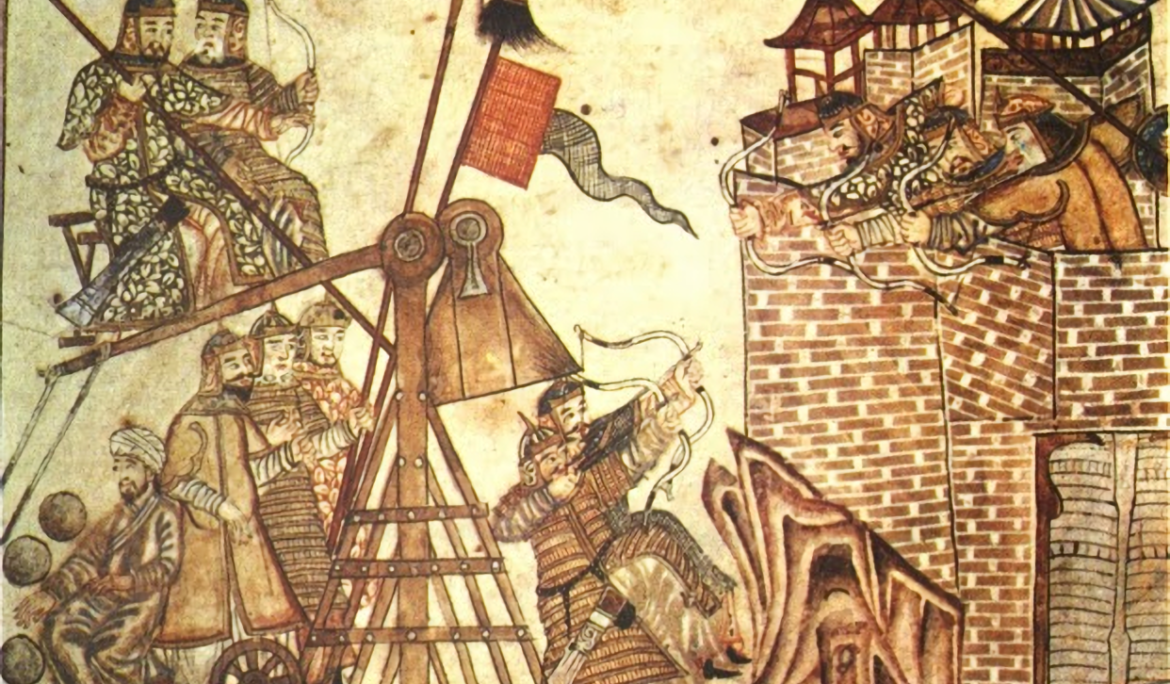The BTWC Confronting False Allegations And Disinformation
Introduction Russia invaded Ukraine on 24 February 2022. Following Russia’s occupation of territory in the east, north and south of Ukraine, it took possession of several biological research facilities. Partly based on documents it claimed to have recovered from these facilities, Russia alleged that the United States had been sponsoring biological activities in Ukraine violating the 1972 Convention on the Prohibition of the Development, Production and Stockpiling of Bacteriological (Biological) and Toxin Weapons and on their Destruction (Biological and Toxin Weapons Convention, BWC), a disarmament treaty that outlaws the development, acquisition and possession of biological weapons. During the first few …
Catapulting Cadavers: A Medieval Practice of Biological Warfare?
Introduction to Historical Notes, Issue #2 The Mongol siege of Caffa in 1346 is closely associated with the spread of the plague epidemic to continental Europe and northern Africa. A major Genoese trading post in the Crimea, its citizens escaped via the Black Sea and the Bosporus, eventually bringing the Black Death to Mediterranean ports from where it spread inland or onward to coastal cities in west and north Europe, eventually reaching even Iceland. Bad as the medieval pandemic was, its transfer to the Mediterranean basin some authors have attributed to an act of warfare: the catapulting of plague-ridden corpses …
“Biological weapons are banned; biological research is not”
Amid the barrage of lies accompanying Russia’s war against Ukraine, the Kremlin’s disinformation narrative that Ukraine is carrying out research to develop biological weapons stands out as particularly insidious. Not only does it attempt to justify Russia’s brutal invasion, but also discredit legitimate biological and epidemiological research worldwide, at the risk to global public health. In an interview with EUvsDisinfo, Dr. Jean-Pascal Zanders, founder of The Trench and an independent expert on disarmament questions covering chemical and biological weapons, talks about the crucial differences between legitimate biological research and the development of biological weapons and why Russia is engaging in …
Operationalising BTWC Article VII – A Task for the forthcoming Review Conference
[This new publication by the Implementation Support Unit of the Biological Weapons Convention and UN Office for Disarmament Affairs was presented on 8 April to delegates participating in the Preparatory Committee meeting in Geneva ahead of the Review Conference later in the year. The text below is from the preface.] Article VII is arguably one of the least detailed provisions in the Biological Weapons Convention (BWC). It comprises a single sentence: Each State Party to this Convention undertakes to provide or support assistance, in accordance with the United Nations Charter, to any Party to the Convention which so requests, …
de Mussi and the Siege of Caffa: Origin of a Biological Warfare Allegation
The plague pandemic that hit central and western Asia, the Mediterranean societies and western and northern Europe in the middle of the 14th century features in all present-day historical narratives of chemical and biological warfare. To many writers those events underscore the potential of massive destruction in terms of both human and economic losses to societies. They also tend to ascribe the pandemic’s origin to a specific deed, namely the catapulting of diseased bodies into the Crimean town of Caffa by Mongol besiegers in 1346. Fleeing citizens carried what became known as the ‘Black Death’ to Mediterranean ports from where …
No humanitarian justification for biological weapons
On 11 January Digital Journal, an online publication touching upon current events and with a penchant for science and technology affairs, published an Op-Ed by Megan Hamilton, an animal and nature-loving journalist based in Costa Rica, on Technology and the art of modern warfare. The piece is worrying enough for all the new technologies under consideration: fast-firing guns that could be deployed on satellites, direction-changing bullets, laser guns to knock out enemy drones, and so on. The item that caught my attention was a discussion about a project once run by US Defense Advanced Research Projects Agency (DARPA) that turned …





